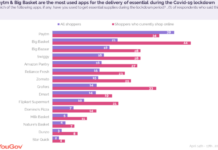Mumbai March 8, 2014 : Insurance industry stakeholders are deeply divided over the issue of mandating banks to become insurance brokers. The division over opening up this distribution channel was more than evident at the Business Standard Insurance Round Table here on Friday.
For banks, the Insurance Regulatory and Development Authority (Irda) follows the corporate agency model, wherein one bank is allowed to tie up with a life, a non-life and a standalone health insurer to sell their products. The insurance regulator and the finance ministry are now considering making the broking channel compulsory for banks.
The tone for the discussion was set by Sanjay Kedia, country head and chief executive, Marsh India Insurance Brokers. “Having a channel of distribution that represents the customer will help bridge the trust deficit. Imposing any decision as a necessary compulsion to switch from one distribution to other may not be a good idea,” he said.
While some in the sector feel banks selling multiple company products could curb mis-selling, some insurers disagree.Amitabh Chaudhry, managing director and chief executive, HDFC Life Insurance, said this notion might not be correct, as the broker model had one of the highest levels of mis-selling. “Why have this open architecture only in banks? Why is it not being talked about in agency, where we have closed architecture and needs to be opened up?” Chaudhry asked.
To deal with this issue, experts said banks could be incentivised to become brokers. Anup Rau, chief executive officer, Reliance Life Insurance, said agents who had merely passed 10th or 12th standard examinations might not be able to sell products of multiple companies.
P Nandagopal, managing director and chief executive of IndiaFirst Life Insurance, said though there was a case for an open architecture, it should not be mandated at the cost of existing investments and corporate relationships.
Agreeing, G Srinivasan, chairman and managing director of New India Assurance, said the banks-as-broker model should be followed so that banks took it seriously and didn’t view this just as an income-earning proposition.
“If we correct the remuneration of the broker in line with the work he does and then leave the choice to banks, we might have some banks opting for this model, rather than resisting it,” Kedia said.
The regulator is also open to the new model, though a transition path needs to be arrived at. R K Nair, member (finance and investment), Irda, said this was a good concept, though admitting banks had to bring a mindset change to represent clients, not companies. “It is an ideal transition. The regulator could have a set of incentives and disincentives that will promote better behaviour among intermediaries,” said Nair.
Among other issues, aggressive pricing and discounts in group portfolio were also discussed. Bhargav Dasgupta, managing director and chief executive, ICICI Lombard General Insurance, said one couldn’t build a business on unsustainable pricing. He added the health segment should have a system of annual price increase, owing to the high medical inflation.
To deal with companies chasing revenue at the cost of profits, executives suggested risk-based capital models be adopted. Dasgupta said India should look at a risk-based capital model, adding in portfolios in which combined ratios were very high, there could be norms for companies to have more capital.
On the regulator’s decision to let companies decide persistency levels for agents, the stakeholders said this was a move in the right direction. Nandagopal said in terms of persistency, a self-governing mechanism was needed in the sector. “Shifting responsibility to industry is the right thing because the industry has to own up the problem and the solution,” he added.
Though the move has been criticised by many experts, as this would lead to more mis-selling, Nair justified it. He said more intermediaries were required in the market, owing to which new concepts such as sub-broking were being considered. He added the new system would ensure greater management oversight on persistency.
There is also concern in the insurance sector about the low penetration of life and general insurance. While life insurance penetration is just below five per cent of gross domestic product, that of general insurance is less than one per cent. Dasgupta said these data, the sector had a long way to go.
Irda is taking efforts to improve awareness about insurance products. Nair said through the ‘Bima Bemisaal’ campaign and further discussions with stakeholders to improve visibility, the regulator planed to improve the perception and demand for insurance.
































